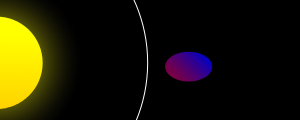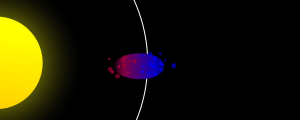Roche limit
astronomical concept
The Roche limit (pronounced /ˈroʊʃ/), or Roche radius, is a planetary distance.
 |
 |
 |
 |
 |
Inside the Roche limit, orbiting material will form planetary rings. Outside the limit, material sticks together and forms satellites.[1]
The term is named after Édouard Roche, the French astronomer who first stated it in 1848.[2]
References change
- ↑ Eric W. Weisstein (2007). "Eric Weisstein's World of Physics - Roche Limit". scienceworld.wolfram.com. Retrieved September 5, 2007.
- ↑ NASA. "What is the Roche limit?". NASA - JPL. Archived from the original on 2013-02-04. Retrieved September 5, 2007.
Sources change
- Édouard Roche: La figure d'une masse fluide soumise à l'attraction d'un point éloigné, Acad. des sciences de Montpellier, Vol. 1 (1847–50) p. 243
Other websites change
- Detailed derivation of formulae for calculating the Roche limit
- Discussion of the Roche Limit Archived 2007-08-26 at the Wayback Machine